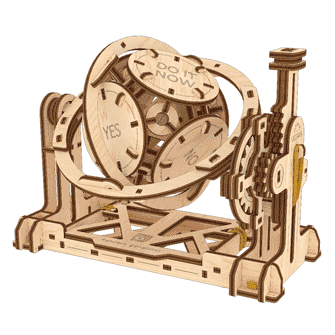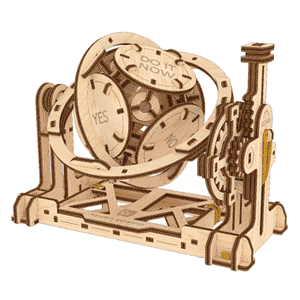- Ages 8+
- Model size: 17.3 x 12.2 x 13.2 cm
- Number of components: 160
- Estimated time for assembly: 3 hours
STEM lab Model kits come with all you need in a box.
- Wooden details pre-cut with a precise high-tech laser in high-quality plywood boards, as well as other materials required for assembly. The models need no glue or additional instruments to build. The details come out of the board with a slight push.
- Step-by-step illustrated assembly instruction manual.
- Practical lab tasks with the use of your model.
- QR-code to download a pocket study guide about your model, its mechanism, the principle of its working, main characteristics, physical and mechanical formulas, and fun practical tasks.
- QR-code to download AR application. Fascinating innovation from Ugears – a new drive to learn more new things!
- Model size: 17.3 x 12.2 x 13.2 cm
- Number of components: 160
- Estimated time for assembly: 3 hours
STEM lab Model kits come with all you need in a box.
- Wooden details pre-cut with a precise high-tech laser in high-quality plywood boards, as well as other materials required for assembly. The models need no glue or additional instruments to build. The details come out of the board with a slight push.
- Step-by-step illustrated assembly instruction manual.
- Practical lab tasks with the use of your model.
- QR-code to download a pocket study guide about your model, its mechanism, the principle of its working, main characteristics, physical and mechanical formulas, and fun practical tasks.
- QR-code to download AR application. Fascinating innovation from Ugears – a new drive to learn more new things!







